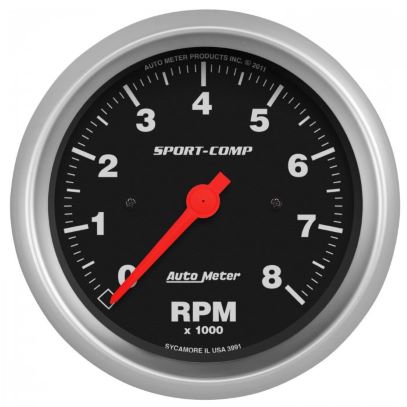Discover How a Tachometer Can Improve Your Automobile's Efficiency
The Relevance of a Tachometer in Keeping Track Of Engine Speed and Performance in Automotive Applications
In the realm of automotive engineering, the tachometer stands as a crucial instrument in the chauffeur's collection, giving a direct home window right into the inner workings of a vehicle's engine. Beyond its feature as a mere gauge of revolutions per min (RPM), the tachometer offers as a crucial device for lovers and professionals alike, providing real-time insights into engine efficiency and health.
Value of Keeping An Eye On Engine RPM
Keeping track of engine RPM, or changes per minute, is an essential aspect of automotive maintenance and efficiency evaluation. Engine RPM directly correlates with the rate at which the engine's crankshaft revolves, showing just how promptly the engine is running - tachometer. By keeping an eye on RPM, mechanics can evaluate the health and wellness of the engine, identify possible issues, and fine-tune performance. An uncommon RPM analysis may signify troubles such as engine misfires, faulty trigger plugs, or problems with the gas delivery system. Continually high RPM analyses could suggest hostile driving routines or the need for a greater equipment shift to enhance gas effectiveness.
In addition, keeping track of engine RPM is vital for efficiency assessment in racing and high-performance lorries. In recap, checking engine RPM is not just important for spotting problems yet likewise for maximizing engine efficiency in various automotive applications.

Benefits of Real-Time Information
In auto applications, real-time data plays a crucial role in providing instant insights into the efficiency and problem of the lorry. By constantly keeping an eye on various parameters such as engine speed, temperature, fuel consumption, and much more, real-time information uses many advantages that contribute to improved performance and safety and security when traveling.
Furthermore, real-time information helps with efficiency optimization by providing instant responses on driving practices and engine effectiveness. Vehicle drivers can change their habits in real-time based on this details to achieve far better fuel economic situation and lengthen the lifespan of their lorry.

Furthermore, real-time information plays an important duty in modern vehicle diagnostics, enabling service technicians to quickly identify and resolve malfunctions. This causes lowered downtime, lower maintenance costs, and inevitably, improved general automobile integrity and longevity (tachometer). By taking advantage of the power of real-time information, automobile stakeholders can make educated choices that favorably impact both the performance and durability of the automobile
Impact on Gear Shifts
The tachometer plays an essential function in optimizing gear shifts by giving real-time engine rate information to the motorist. When coming close to the redline on the tachometer, it indicates the chauffeur to upshift to avoid over-revving the engine and causing potential damages.
In addition, the tachometer help in accomplishing smoother gear transitions, specifically in hand-operated transmissions. By keeping an eye on engine speed, chauffeurs can execute equipment shifts at the optimal RPM array, lowering snagging motions and minimizing endure the transmission elements. This precision in equipment modifications not only boosts driving convenience however also adds to fuel efficiency.
Enhancing Gas Effectiveness
Given the essential function the tachometer plays in optimizing equipment shifts for efficiency and engine health and wellness, it directly adds to making best use of fuel efficiency in vehicle applications. By offering real-time responses on engine speed, the tachometer aids motorists in maintaining one of the most efficient RPM variety for fuel economic situation. When chauffeurs continually keep track of the tachometer and readjust their driving routines accordingly, they can prevent unnecessary fuel intake brought on by over-revving or hauling the engine.
Furthermore, the tachometer assists vehicle drivers determine the most fuel-efficient equipment to be in at any kind of given moment, preventing the engine from working more difficult than required. In verdict, the tachometer serves as an important device in boosting fuel effectiveness by promoting optimal driving habits and identifying areas for renovation in the he said lorry's performance.

Maximizing Engine Longevity
The tachometer's function in monitoring engine speed and efficiency is instrumental in making sure the long life of automobile engines. By utilizing the tachometer successfully, motorists can optimize engine durability through conscious RPM management. Continually revving an engine expensive can bring about extreme wear and tear on essential elements, such as the pistons, shutoffs, and bearings. Gradually, this can lead to decreased engine efficiency and potential breakdowns. Keeping track of the tachometer allows motorists to stay within the advised RPM variety for their vehicle, stopping unnecessary stress on the engine website link and extending its life-span.

Final Thought
To conclude, the tachometer plays a critical function in checking engine speed and efficiency in automobile applications. By giving real-time data on RPM, it permits for effective gear shifts, boosted fuel performance, and taken full advantage of engine longevity. This tool is crucial for preserving optimum engine performance read and making sure the total functionality of an automobile.